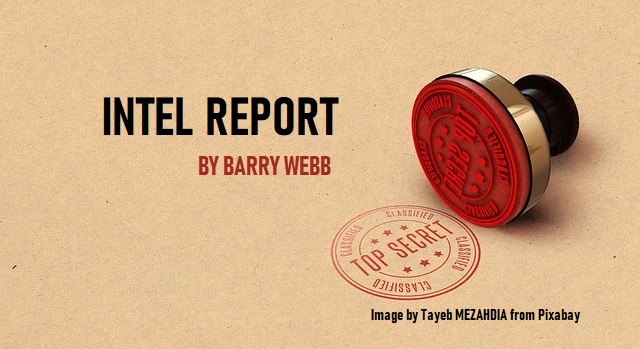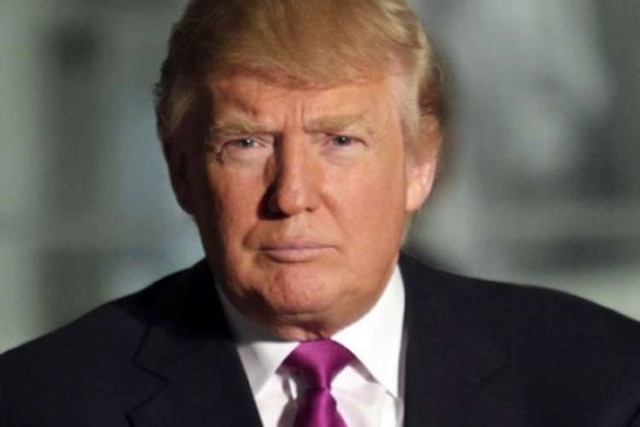
TURKEY/SYRIA
On 15 February 2020 both the Qatar-based and owned, and pro-Muslim Brotherhood, and pro-Turkey www.aljazeera.net and the Saudi-owned www.alarabiya.net and both of their TV outlets reported that Russia is accusing Turkey of arming “rebel” groups in Syria with American manufactured weapons, including anti-aircraft missiles.
Both news outlets also reported that in addition to Turkey providing these “rebels” with weapons, they are also providing them with regular Turkish army uniforms.
What is interesting here, is the different terminology that each of these news organizations use to describe these “rebel,” or anti-regime groups. We will look first at Al-Jazeera, which supports Turkey’s policy of using former ISIS and al-Qaeda terrorists as “shock” troops to pave the way for Turkey’s eventual re-establishment of the Jihadist Ottoman Empire Caliphate, a goal which Qatar and its Muslim Brotherhood client also support.
Al-Jazeera uses the terms al-mu’aaredah (opposition) and al-musaleheen (the armed ones) to describe the groups receiving the Turkish uniforms and American weapons. By ignoring the al-Qaeda and ISIS connections of these groups Turkey is arming, al-Jazeera is legitimizing them in the eyes of western media outlets many of whom simply copy
al-Jazeera reports for their Middle East news. This in turn, makes it easy for western political leaders to ignor Turkey’s ISIS and al-Qaeda connections.
Whereas al-Arabiyya TV, and website, provide the full, correct identification of the recipients, namely hay’at tahreer ash-sham (The Liberation of Syria corps), which is nothing but a spin-off of jebhet an-nusrah (The Victory Front), which in turn is nothing but a spin off from al-Qaeda.
Let me repeat what this actually means. Our NATO “ally” Turkey is providing American arms to al-Qaeda.
The Saudi-owned al-Arabiyya outlet went on to report that Turkey has also deployed more than 70 tanks, 200 other types of armored vehicles, and 80 artillery pieces. The report went on to say that a “large part” of this equipment was handed over to the fighters of the an-Nusrah front terrorist group.
The al-Jazeera account, while ignoring the al-Qaeda connection, quoted Turkish President Erdogan as saying that if Syria does not halt its “aggression” and pull back to the lines Erdogan says were agreed upon at Astana and Sochi by the end of this month, that Turkey, supported by its allies, would force them to withdraw, and if Turkey’s allies would not help, then Turkey would accomplish that by itself.
Turkey maintains (and has said this numerous times) that it will never leave Idlib beause Idlib is vital to Turkey’s national security.
RUSSIAN INFORMATION
Both of these Arabic news entities cited as their source for some of this information a Russian Political Military source via the website “interfax.” Many in West would therefore like to discount it as Russian misinformation. However, I tend to believe this is accurate information for the simple reason that it tracks with everything else Turkey has done in the so-called “War on Terror.” Why not? The United States itself directly armed and worked with al-Qaeda offshoots in Syria during the Obama Administration years, and Turkey is the godfather of ISIS, helping it through its gestation period and selling its stolen oil on the black market to help finance it once it had taken over large swaths of Iraq and Syria.
ANALYSIS:
As for Idlib being vital to Turkey’s national security . . . since when? And, by whom? For the last several years of the Syrian civil war Idlib has been a province ruled almost entirely by al-Qaeda–under Turkey’s auspices. The only difference now is that Turkey is moving in itself, and it is moving in to stay.
Notice also that Erdogan is threatening to bring NATO in on its plan to conquer Syria, and in so doing possibly start a major war between NATO and Russia. Erdogan’s threats against the Syrian armed forces is a veiled threat against Russia whose airpower is supporting the Syrian push into Idlib. That’s all we need is for this pro-Muslim Brotherhood NATO “ally” to get us into a war with Russia which could spill over into Central Europe should Russia begin to lose ground in Syria.
And, since when does an invading country have the right to call the armed forces of the country being invaded the “aggressor” when it tries to retake its own territory from armed terrorist groups supported by the invading country?
Turkey complains about the flood of refugees entering its country. Well, this is a war that Turkey is largely responsible for, so I for one have no sympathy. As for the current situation in Idlib, had Turkey not armed and coddled Al-Qaeda, and supported their occupation of Idlib, the Syrian armed forces would not now be having to use military force to reacquire that province and there would be no flood of refugees into Turkey.
THE PERILS OF APPEASING HITLER
Neville Chamberlain is accused of being responsible for WWII because he gave Hitler the green light to invade a portion of a neighboring country. But Chamberlain really had no other choice. The Brits had no troops in Czechoslovakia, therefore no way to deter Hitler anyway. Nor was there any unified western stand against Hitler’s ambitions until it was too late.
Do we not see the same thing happening here?
Erdogan, the 21st century Hitler, is following a very predictable game plan. First he sends armed terrorist groups into a country to create chaos. Then he complains about “national security threats to Turkey” and wins a Western okay to either engage in “joint patrols” which then become all Turkish patrols because the joint patrols “didn’t work,” or he wins Western acquiescence to go ahead and send in Turkish troops to establish order as he is now doing in Idlib.
We can expect Turkey to repeat this process over and over again until it has reconstituted the jihadi Ottoman Empire Caliphate in its entirety, and then some.
Poor old Neville Chamberlain. But at least he, and the English, never armed their Hitlerian enemy. The United States, on the other hand, has been, is, and will in the near future arm its new Hitlerian enemy to the teeth with the latest high tech weaponry (probably to include F-35s). And, not only that, the U.S. looks the other way when this 21st century Hitler arms the terror group al-Qaeda with American manufactured weapons no less.
Hey folks, wasn’t al-Qaeda the whole reason we got into these “never-ending” Middle Eastern wars? Anybody out there remember 9/11?
So, where did these policies come from? Why is the Trump administration in 2020, over three years into its 1st term, following this same path of its predecessor, at least on this one issue?
I believe the origins of this policy are to be found in academia. Throughout the 20th century academia has exerted tremendous efforts to whitewash Islam in general, and towards the last few decades of the 20th century, the Muslim Brotherhood in particular. This in turn led to a strain of “thought” in the State Department that the solution to violence and terrorism in the Middle East would be Muslim Brotherhood rule.
The Obama administration went one step further making one of the cornerstones of its Middle East Foreign Policy the re-establishment of the Ottoman Empire Caliphate under Turkish auspices united with the Muslim Brotherhood heading up the Sunni Arab countries. That viewpoint still holds sway in at least the upper levels of the State Department, if not throughout its entire cadre, and current Secretary of State Pompeo has apparently adopted that idea as a major policy plank and sold it to President Donald Trump.
Though President Trump has dropped hints that he’d like to declare the Muslim Brotherhood a terrorist organization (as have seven other countries), he can’t do so unless he also comes to terms with the Turkey situation, since its ruling party the AKP is a clone of the Brotherhood, and Turkey is one of the leading supporters of the Muslim Brotherhood international, along with its ally and fellow terrorism supporter Qatar.
Therefore, I see the U.S. administrations continuing to go along with Erdogan’s schemes like the proverbial toad in the pot of slowly boiling water.
Heartbreaking.
TURKEY AND LIBYA
Turkish advances into northern Syria have had ramifications on the Libyan war as well. Egyptian and Saudi media outlets have been reporting continuously for the last several months on the flood of “fighters” from Syria that Turkey is transporting to Libya to support the Sirraaj government in Tripoli. Were Turkey to win the current tug of war with Russia and Syria over the Idlib province in Syria, that process of sending al-Qaeda and ISIS leftovers and sympathizers into Libya will continue.
Meanwhile, the Europeans are pushing for a permanent “cease fire” in Libya, and trying to pressure the Libyan National Army led by General Khalifa Haftar to accept it. Such a cease fire will only guarantee not only the survival of the Sirraaj government in Tripoli, which hosts a number of the world’s leading terrorists, but would also preserve Turkey’s foothold in Libya. According to numerous Saudi, Egyptian, and Russian reports, and as reported previously on this site, Turkey has been using that foothold to smuggle weapons into Africa’s Sahel region in which a large, de facto “super Islamic State” is forming. This is a region that will soon be exporting terrorism into Europe, and possibly beyond.
Thus, any sort of cease fire or international agreement to make the current status quo permanent only guarantees the fulfillment of the worst case scenario cited by numerous news entities in the West as well as the Middle East.
The Europeans by voting in favor of a permanent cease fire in Libya are voting for their own suicide.
This is turn illustrates an issue that virtually all decision-makers and policy wonks in the west share, and this is an inability to identify the enemy. In World War Two it was easy. The enemies were the nation states of Germany, Japan, and for a while, Italy. When you are fighting nation states, it is easy to identify the enemy and therefore easy to demonize the enemy and rally public opinion around the war effort.
But when the enemy happens to be a religion, the West is entirely bamboozled. The best the West could come up with was a “War against Terrorism.” This war was fought by killing off the leadership of known terrorist organizations and in some cases, undermining their organizational structures, and then thinking that the “War against Terror” was won. But it did absolutely nothing in terms of undermining and destroying the ideology that makes the terrorist groups possible, and that will continue to feed those groups and/or their successors for many decades, or centuries, to come if we continue to fail to take this threat seriously.
The United States is very good at winning conventional wars against conventional enemies (i.e. the nation states), but is at a total loss as to how to deal with this 1400 year war for survival that it refuses to acknowledge. It is much easier for the Pentagon bosses, media, and politicians to “pivot” away from a problem it does not understand so as to direct its energies towards problems that it does understand, namely other nation states.
Unfortunately, one of the chief axioms of war is that you cannot defeat an enemy that you cannot identify.
It was to address this gap in Western thinking that I wrote the book mentioned below.
TUNISIAN ELECTIONS
The result of the Tunisian parliamentary elections several months ago had the
an-nahdhah (renaissance) party wining a narrow plurality of the votes. The an-nahdhah party is a clone of the Muslim Brotherhood, though they have tried to pretend otherwise, and have been suspected by segments of the Tunisian populace of a pair of political murders when they briefly held the majority in the parliament in the aftermath of the Arab Spring.
As a result of the Tunisian public’s suspicions about an-nahdhah none of the other Tunisian political parties were willing to join with it in a coalition government. Thus, the Tunisian President Qais Sa’eed asked the number two party to form the coalition, which they did. But now, Arabic media sources are reporting that the an-nahdhah party refused to recognize the coalition as legitimate because they were left out of it.
Consequently, the Tunisian political situation is still in turmoil. This is especially pertinent given the on-going civil war next door in Libya, and that the head of the Muslim Brotherhood clone an-nahdhah party just paid a visit to Turkish president Erdogan, whose ruling AKP party is also a clone of the Muslim Brotherhood, and who also happens to be deeply involved in the Libyan Civil war.
© All rights reserved.
RELATED ARTICLE: Iran’s Sham Parliamentary Elections Aim to Strengthen Hard-Liners’ Hand















